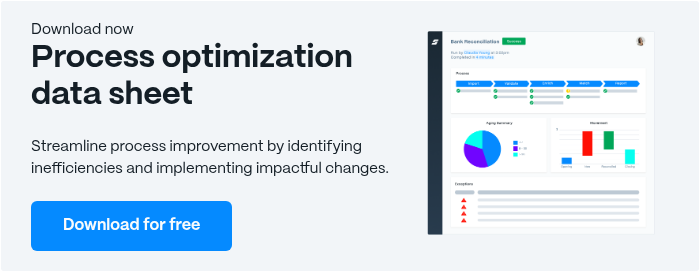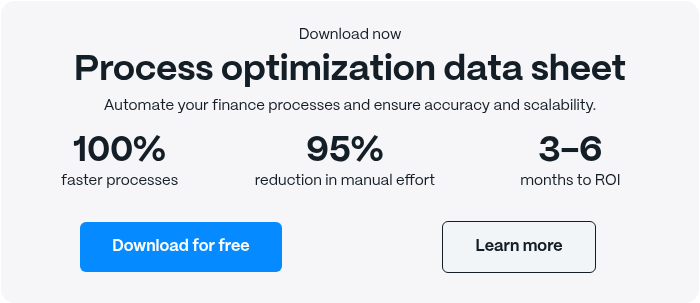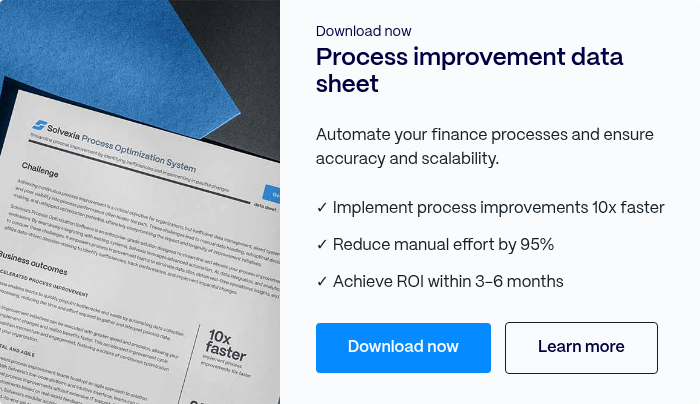20 Powerful Continuous Improvement Methods for Success

Running a business means you’re constantly looking for ways to operate with more efficiency and lowered costs. With continuous improvement methods, you can transform such goals into reality.
In this article, we will share some continuous improvement processes examples and continuous improvement tools to help you along your journey.
Coming Up
1. What is Process Improvement?
2. What is Continual vs Continuous Improvement?
3. What are the Methods for Managing Continuous Improvement?
4. What are Continuous Improvement Methodologies?
5. What is Continuous Improvement Software?
What is Process Improvement?
Process improvement is the application of methodologies to evaluate current processes and make them better. The intention is to create processes that are streamlined, which lead to increased productivity and potentially increased profitability, too.
To do so, you’ll have to identify the processes you wish to improve, analyse their current status, map out its future state, and then implement and monitor the changes.
There are different continuous improvement methods to choose from, and you can decide which are right for you based on your current as-is state and where you wish to be.
What is Continual vs Continuous Improvement?
When it comes to continuous process improvement, it is often confused with continual improvement.
However, there exists a nuance between the two, and it has to do with time.
Continual improvements refers to general processes of improvement that cover different areas with different approaches.
On the other hand, continuous improvement is a subset of continual improvement. It is made of incremental modifications within an existing process to make it better over time.
What are the Methods for Managing Continuous Improvement?
Now that you have a solid understanding of what continuous improvement aims to achieve and how it is performed, let’s take a look at continuous improvement methods and how you can manage them.
1. DMAIC and PDSA
DMAIC and PDSA are acronyms that provide a framework for how to execute incremental process improvement steps. DMAIC stands for Define, Measure, Analyse, Improve and Control. PDSA stands for Plan, Do, Study, Adjust. These frameworks allow you to test different ideas and see the results.
2. Daily Huddles
An informal way to constantly improve upon processes is to set a habit of daily huddles. This is where teams come together around a “huddle board” and share ways to solve problems.
With the emergence and growth of remote working teams, many organisations are leveraging digital software and cloud-based whiteboards to perform this practice.
3. Standard Work
Standard work is the documentation and current practices that are outlined and defined for any given task or process. Those who perform the work are the people who define and document the process.
Any future improvements made upon the existing process, such as through DMAIC and PDSA, are applied to standard work with revisions. When officially implemented, the new process becomes the Standard Work.
4. Catchball
Catchball is a lean technique that consists of spreading ideas between teams for feedback and inspiration. It’s useful when it comes to strategising and decision-making.
Due to the shared nature of ideas and feedback, people tend to feel more engaged and invested in the outcome because they have a say in what happens.
5. Gemba Walks
In Japanese, Gemba stands for “the real place.” In a Gemba walk, a business’ leadership shows up where the work is actually done to ask questions and pick the brains of those who do the job. This way, they can discover where improvement opportunities exist.
Upon finding out such insights, leaders get together to perform analysis and determine the next steps for improvement.
6. Hoshin Kanri
This method outlines objectives that can be attained within a 3-5 year time span. With the objectives defined, Hoshin Kanri aligns each person’s individual objectives with the overall goals. This creates a plan for daily improvements to be made, with strategy at the top of mind for every decision.
7. Kanban Boards
Many people are visual learners. Kanban boards help teams to visualise workflows and can identify where disruptions or bottlenecks occur. By seeing where the issues lie, managers and teams can work to remove problems early on.
8. Kaizen Events
A Kaizen event happens when people come together to address and rectify a problem with 100% of their time and energy devoted to the cause over a few days (typically 3-5). These types of changes usually involve cross-functional collaboration and may also utilise a facilitator, subject matter experts, and the people who are hands-on with the process.
9. Value Stream Mapping
Value stream mapping aims to eliminate waste from a process by comparing its current state to a perfect state. With the workflows visualised, it becomes easier to adjust the process for the better.
10. 5 Why’s
For root cause analysis (to get to the bottom of why a process is inefficient), consider using the 5 Why’s, which is a continuous improvement method. It involves asking the question, “Why?” for 5 times in a row to get to the heart of an issue.
What are Continuous Improvement Methodologies?
Over time, there’s been an evolution of continuous improvement methodologies with more approaches being tried and proven. Every business operates with its own set of needs, technologies, and goals, so it’s of great value to know the options to proceed forward with your own continuous improvement methods.
Some of these include:
1. Lean
Lean is focused on delivering the maximum value to the customer. It takes into account every stage of a process to remove waste. The Lean methodology came from James Womack in 1991 in his book, The Machine that Changed the World.
The book documented philosophies and ways of working from Toyota Motor Company. Through Lean, everyone in a company is involved in helping to make improvements that drive value.
2. Six Sigma
Coined by Motorola’s engineer Bill Smith in 1986, Six Sigma is a quality control methodology. For every 1 million units produced, the goal is to reduce product defects to within 3.4 defects. It uses the scientific method to make improvements that remove process variation and is rooted in the applying DMAIC to do so.
3. Total Quality Management
Total Quality Management (TQM) brings together teams with the shared goal of maximising customer satisfaction.
It is based on 8 key elements, namely:
- Customer-focused
- Total employee engagement
- Process-centered,
- Integration of systems
- Systemic approach
- Continual improvement
- Data-driven decision-making
- Communication
4. ISO
ISO 9000 consists of quality management standards created by the International Organisation of Standardisation, which were released in 1987.
It consists of 7 principles, including:
- Customer-focus
- Leadership
- Engagement of people
- Process approach
- Improvement
- Evidence-based decision-making
- Relationship management.
As you can see, it shares a lot in common with TQM.
5. Theory of Constraints
Theory of constraints looks at business processes as a series of nodes that are restrained by bottlenecks. The goal of this methodology is to remove bottlenecks to maxmise outputs.
Many organisations have been able to do so by leveraging automation solutions. With automation solutions, you can map a process, spotlight where an inefficiency exists, and then automate workflows to overcome bottlenecks and delays.
6. Agile
Agile aims to maximise the value of resources in the shortest amount of time. It was born out of the “application development crisis” in the 1990’s, but is now also applied to manufacturing and operations.
7. Lean Start-up
Lean start-up focuses on incorporating market and customer feedback in the development process of delivering a product from the very start. It involves customer discovery, the creation of a minimum viable product (MVP), and ongoing iteration.
8. Growth Hacking
Growth hacking is geared towards rapid advancement in regard to conversion and customer acquisition. It is most commonly used in marketing and product design to hit targets.
9. Leagile
As you may have guessed, Leagile combines the lean and agile methodologies to develop market fit cost-effectively. It typically is executed with a base service and then the options to customise and add more on a customer-by-customer basis.
10. Lean Six Sigma
Another hybrid approach is Lean Six Sigma, combining what you probably guessed – the lean and Six Sigma methodologies. Six Sigma delivers process control to reduce variation and Lean helps to eliminate waste.
What is Continuous Improvement Software?
To make continuous improvement methods easy to implement, you can make use of continuous improvement software. This type of software can guide you through processes as well as provide you with analysis and reporting to constantly monitor results.
In general, when you are aiming to improve upon your processes, you’ll need analytics and reports to measure the success of your efforts.
Automation software can provide you with these resources. At the same time, you can use automation software to remove manual and repetitive tasks from your employees’ workload and free up their time to focus on bigger picture items. It also improve accuracy by removing many errors from manual processing.
WIth automation solutions, you can test and implement new processes with agility and speed. Combined with speed, you’ll gain more accuracy in your processes, as well as the ability to easily standardise processes to make them more efficient.
Closing Thoughts
As you’ve read, there are many continuous improvement methods to select from during your journey to better your business. With every aspect of business constantly evolving, it’s recommended to consistently gauge how your processes are working and what can be improved upon for optimal results.
The use of automation software and technological tools exist to make your business processes more streamlined, efficient, and effective.
FAQ
Intelligent reconciliation solution
Intelligent rebate management solution
Intelligent financial automation solution
Intelligent Financial Automation Solution
Intelligent financial automation solution
Intelligent financial automation solution
Intelligent financial automation solution
Intelligent financial automation solution
Intelligent regulatory reporting solution
Free up time and reduce errors
Recommended for you

Request a Demo
Book a 30-minute call to see how our intelligent software can give you more insights and control over your data and reporting.

Reconciliation Data Sheet
Download our data sheet to learn how to automate your reconciliations for increased accuracy, speed and control.

Regulatory Reporting Data Sheet
Download our data sheet to learn how you can prepare, validate and submit regulatory returns 10x faster with automation.

Financial Automation Data Sheet
Download our data sheet to learn how you can run your processes up to 100x faster and with 98% fewer errors.

Financial Automation Data Sheet
Download our data sheet to learn how you can run your processes up to 100x faster and with 98% fewer errors.

Financial Automation Data Sheet
Download our data sheet to learn how you can run your processes up to 100x faster and with 98% fewer errors.

Financial Automation Data Sheet
Download our data sheet to learn how you can run your processes up to 100x faster and with 98% fewer errors.

Financial Automation Data Sheet
Download our data sheet to learn how you can run your processes up to 100x faster and with 98% fewer errors.

Financial Automation Data Sheet
Download our data sheet to learn how you can run your processes up to 100x faster and with 98% fewer errors.

Rebate Management Data Sheet
Download our data sheet to learn how you can manage complex vendor and customer rebates and commission reporting at scale.

Top 10 Automation Challenges for CFOs
Learn how you can avoid and overcome the biggest challenges facing CFOs who want to automate.
.svg)









